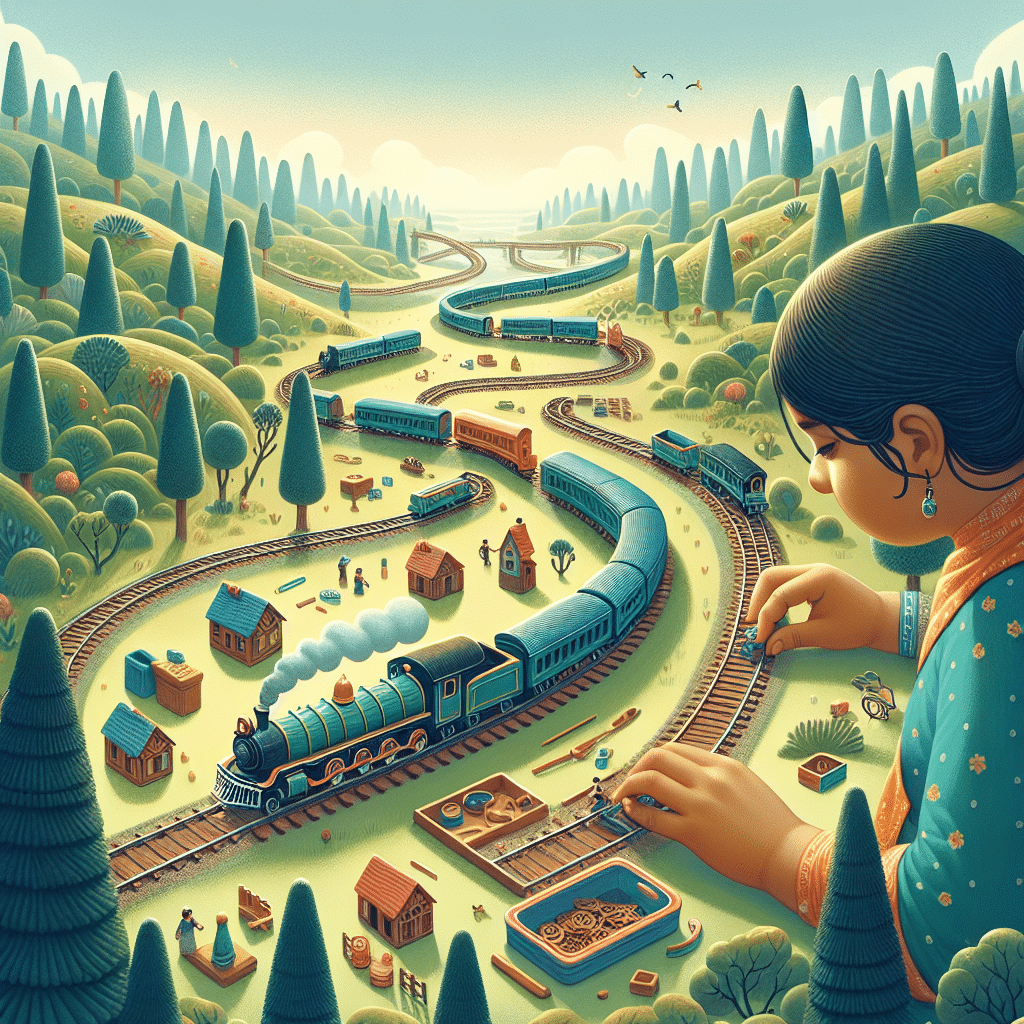How to Build a Toy Train Set: A Beginner’s Guide 🚂
If you’ve ever watched a train whizz by, you’ll understand the allure of building your own miniature railway. Creating a toy train set is not just a hobby; it’s an adventure that lets your imagination run wild. Whether you’re starting this journey for yourself or to share with a child, building a toy train set can be a rewarding, fulfilling experience. Let’s dive into the essentials of crafting your first train set!
Table of Contents
1. Introduction to Toy Train Sets
2. Choosing the Right Train Set
3. Setting Up Your Space
4. Designing Your Track Layout
5. Assembling the Train Set
6. Adding Scenery and Details
7. Conclusion
8. FAQs
Introduction to Toy Train Sets 🚂
Toy train sets have been a beloved pastime for generations. They serve as a perfect blend of creativity, engineering, and nostalgia. Whether it’s the clatter of the wheels or the sight of the locomotive winding through a miniature landscape, there’s something magical about this hobby. Before you start, it’s essential to understand the basics and get acquainted with the various components involved.
Choosing the Right Train Set 🛤️
Before you get started, the first step is choosing the right train set. Toy trains come in different sizes, known as gauges, and styles, from steam locomotives to modern electric trains. Here’s what you need to consider:
Gauge Size: The gauge refers to the distance between the rails. Common gauges include HO (1:87 scale), N (1:160 scale), and O (1:48 scale). HO is a popular choice for beginners due to its balance between size and detail.
Type of Train: Decide if you want a historical steam engine, a modern diesel, or perhaps an electric train. Each has its own charm and appeal.
Starter Kits: For beginners, starter kits are ideal as they include tracks, a train, and a power supply. Look for sets that are easy to assemble and come with clear instructions.
Setting Up Your Space 🏠
Creating a dedicated space for your train set is crucial. Here’s how to make the most of your area:
Location: Choose a flat, stable surface such as a table or the floor. Ensure the area is free from foot traffic and safe from pets.
Size Matters: Consider the scale of your train set and ensure you have enough room to expand your tracks. A 4×8 foot plywood board is a popular choice for HO scale layouts.
Power Supply: Ensure there’s an accessible power outlet for your train’s power supply unit.
Designing Your Track Layout 🗺️
Designing your track layout is where your creativity comes into play. Here are some tips to get started:
Plan Your Route: Sketch out your track layout on paper. Consider including features like loops, sidings, and even a station for stopping.
Use Track Pieces: Most starter kits come with snap-together track pieces. Experiment with different configurations to see what works best in your space.
Incorporate Elevation: Add excitement by incorporating elevation changes using risers and trestles. This adds visual interest and a dynamic element to your layout.
Assembling the Train Set 🛠️
Now that your track design is ready, it’s time to put it all together:
Lay the Foundation: Assemble the track according to your design. Ensure all connections are secure to avoid derailments.
Connect the Power: Attach the power supply to the designated track piece. Test the train to ensure it runs smoothly without any interruptions.
Test Drive: Before finalizing everything, run your train around the track to ensure smooth operation. Make adjustments as needed for any tight curves or uneven tracks.
Adding Scenery and Details 🌳
The finishing touches of your train set bring it to life. Here’s how you can enhance the realism:
Landscaping: Add hills, tunnels, and valleys using foam or papier-mâché. Paint them with realistic colors to mimic natural landscapes.
Buildings and Figures: Populate your train set with miniature buildings, people, and vehicles. This adds character and tells a story within your layout.
Lighting Effects: Consider adding LED lights to buildings and along the tracks for night-time effects. This creates a captivating atmosphere.
Conclusion 🎉
Building a toy train set is a fantastic way to explore creativity, patience, and engineering skills. Whether it’s a simple loop or a complex layout, the joy lies in the process and the endless possibilities. Remember, there’s no right or wrong way to build your set—just let your imagination lead the way. Happy railroading!
FAQs ❓
Q: What is the best scale for beginners?
A: HO scale is the most popular choice for beginners due to its manageable size and availability of accessories.
Q: How much space do I need?
A: It depends on the scale and complexity of your layout. A 4×8 foot space is a good starting point for an HO scale set.
Q: Can I add more tracks to my set later?
A: Absolutely! One of the joys of building a train set is the ability to expand and add more tracks and features over time.
Q: Are there digital tools for designing track layouts?
A: Yes, there are several software programs and apps available that allow you to design and visualize your track layout in 3D.
